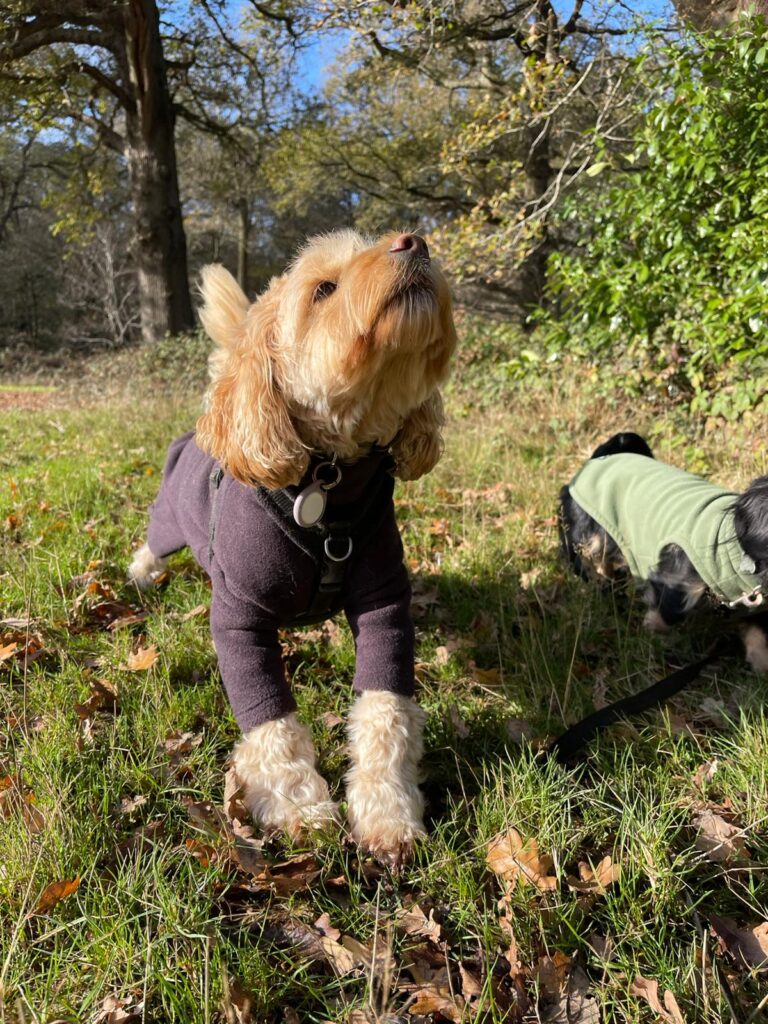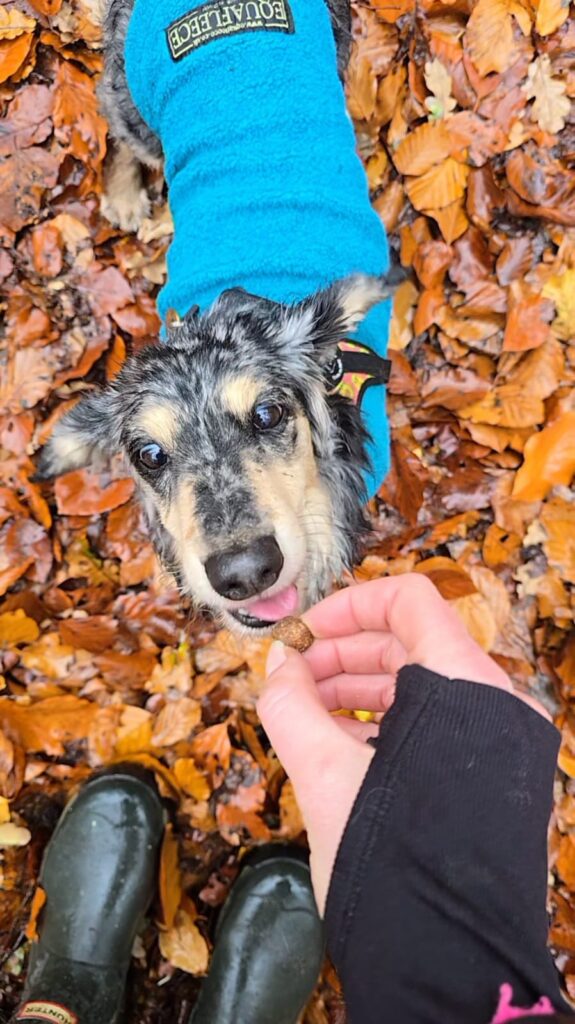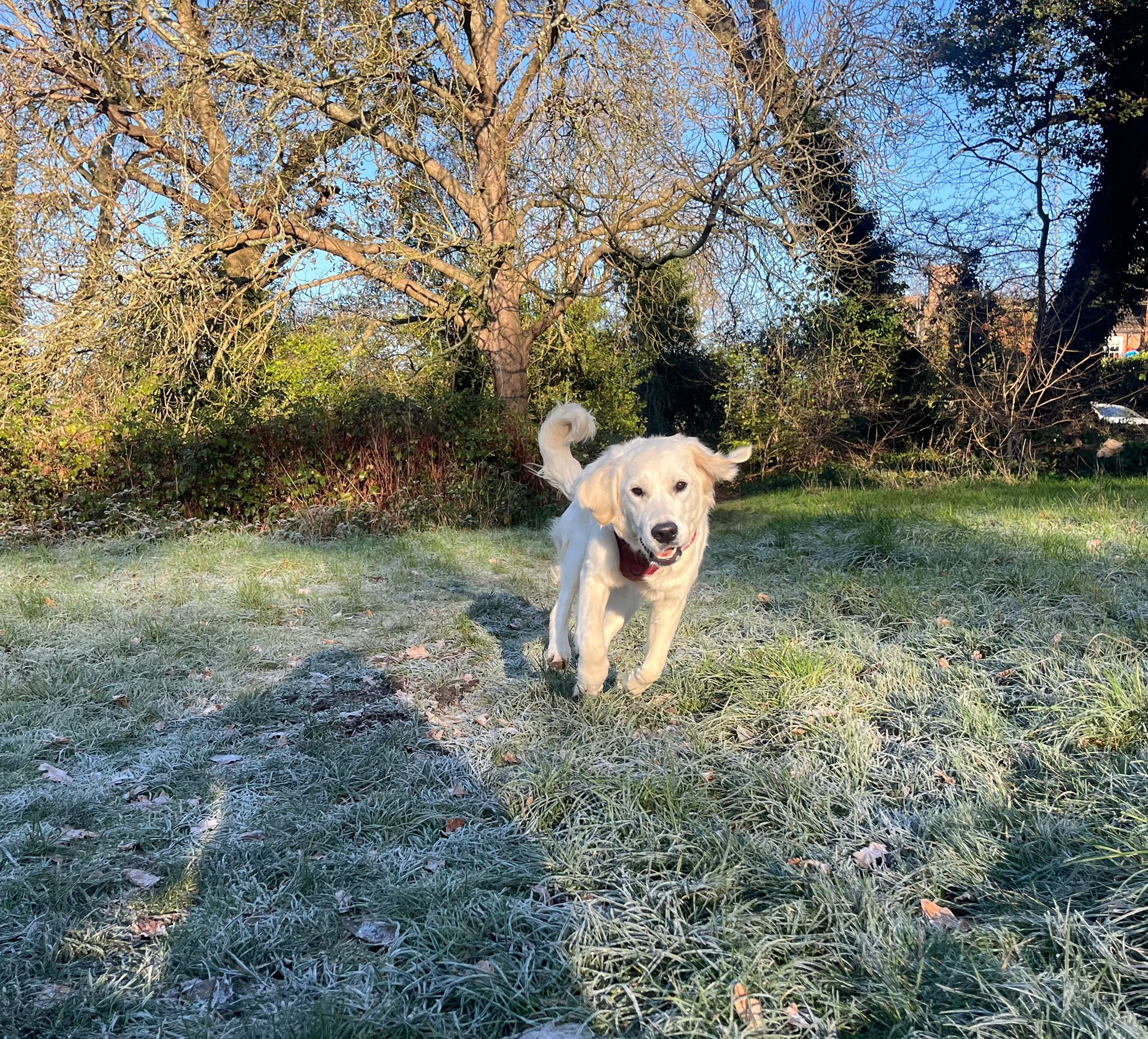The shorter days are here, the central heating is cranked up, and your morning walk now requires a head torch. Yes, the UK winter is officially upon us!
Whilst we might love snuggling up with a hot cuppa, our dogs need a little extra help navigating the colder, wetter, and often muddier months. This isn’t just about keeping them warm—it’s about keeping them safe from the unique hazards of a British winter.
Here are 5 essential ways to prepare your dog for the chilly season, turning them into a happy, safe, little trooper!
1. Master the Art of the “Be Seen” Walk

The darkest days of the year mean that your 4 PM stroll can look like midnight. Visibility is your biggest safety concern when out on walks, especially near roads or shared paths.
- Go Reflective: Equip your dog with a reflective harness, collar, or vest. Skip the dull colours and go for neon or safety yellow.
- LED Power: Invest in an LED clip-on light or a light-up collar. These are cheap, last for hours, and make tracking your dog in the dark (or fog!) incredibly easy.
- Your Gear Too: Don’t forget yourself! Wear bright clothing and consider a small torch or headlamp. If you can’t be seen, your dog is harder to spot, too.
Find out more here
2. Paw Protection Against Grit & Salt

Unlike snowy climates, UK winters involve lots of rain, ice, and—most importantly—road grit and rock salt. This common de-icing agent is toxic if ingested and incredibly drying and irritating to paw pads.
- The Post-Walk Rinse: Make this your #1 non-negotiable step after every walk near treated roads or pavements. Keep a warm bowl of water and a towel right by the door. Soak your dog’s paws for a few seconds to dissolve any salt or grit immediately.
- Paw Balm Barrier: Before walks, apply a specialised paw wax or balm (like Musher’s Secret). This creates a protective, breathable barrier against the salt and dampness.
- Trim the Toe Tufts: Keep the hair between your dog’s paw pads trimmed short. This prevents ice balls (or sticky mud) from accumulating, which can be painful and lead to limping.
Find out more here
3. Rethink the Central Heating Routine

The constant flip-flop between freezing cold outdoor air and a piping hot indoor environment can stress your dog’s skin, coat, and joints.
- Hydration is Key: Heating systems dry out the air, which can lead to dry, flaky skin (and static-shock fur!). Ensure your dog’s water bowl is always topped up, and consider adding moisture-rich food (like a bit of bone broth) to their diet.
- Draft Checks: Older dogs, especially those with arthritis, are very susceptible to cold drafts. Check where their favourite napping spots are (under a window? near a door?) and move their bed if necessary to a warmer, draft-free zone.
- Bed Upgrade: Swap out thin summer mats for something orthopaedic and insulated, like a self-warming pet mat or a fluffy ‘cuddler’ bed they can burrow into.
Find out more here
4. Know Your Dog’s Coat Needs

The idea that “all dogs have fur, so they’re fine” is a myth! Different breeds cope with the cold in vastly different ways.
- The Single-Coat Club: Breeds like Greyhounds, Whippets, Chihuahuas, and many Poodles lack the dense undercoat needed to trap heat. If they look cold, they are cold. A proper, waterproof, and warm dog coat is essential.
- The Double-Coat Crew: Breeds like Huskies, Retrievers, and Border Collies are better insulated. They usually don’t need a coat, but they do need frequent brushing to maintain the insulating quality of their undercoat. Make sure to keep it dry!
- The Wet Factor: The main threat in the UK isn’t deep snow; it’s rain and dampness. Even hardy dogs can become hypothermic if they are wet and still in freezing temperatures. Invest in a quick-drying towel or mitt for fast post-walk rub-downs.
Find out more here
5. Beware of Hidden Toxins (The Sweet Danger)

This time of year brings out a dangerous, highly toxic substance: antifreeze.
- The Danger: Antifreeze often contains Ethylene Glycol, which has a deceptively sweet taste that dogs will lick up. Even a tiny amount can cause fatal kidney failure.
- The Precaution: Be vigilant around driveways, gutters, and garages where car fluids may leak. If you use antifreeze yourself, store it securely and clean up any spills immediately.
- Know the Symptoms: Increased urination, vomiting, and lethargy are early signs. If you suspect your dog has licked any, contact your vet immediately—do not wait!
Find out more here

